This is part 3 of my attempt to catch up on winter blogs. I’m very behind! In part one I wrote about red squirrels – always a popular morning for clients (and myself). Part two were the birds and animals at my pinewood site – crested tits, bank voles and other woodland birds. In this final instalment I’ll be sharing memories of my time on the hill with mountain hares but first, the other species I’ve yet to mention – red deer and snow bunting.
The snow bunting (Plectrophenax nivalis) were a bit hit or miss this winter frustratingly. This was, I presume, because there was very little snow so they were foraging across the mountains. Such a shame because they are brilliant little birds. The vast majority of snow bunting seen in the UK are winter migrants who breed in the Arctic. Scotland does have a small breeding population too, but they are on the Amber List. The buntings tend to appear in flocks – their chirp precedes them and then suddenly they are landing all around looking for seed put out by photographers. Minutes later off they go again. They are a gorgeous colour too, white and an orangey-brown plumage that tones in beautifully with the surroundings – so even when there is no snow they are still very photogenic (if they turned up!)
I did have snow on a couple of visits, although, if memory serves me, I wasn’t with clients on either occasion sadly.

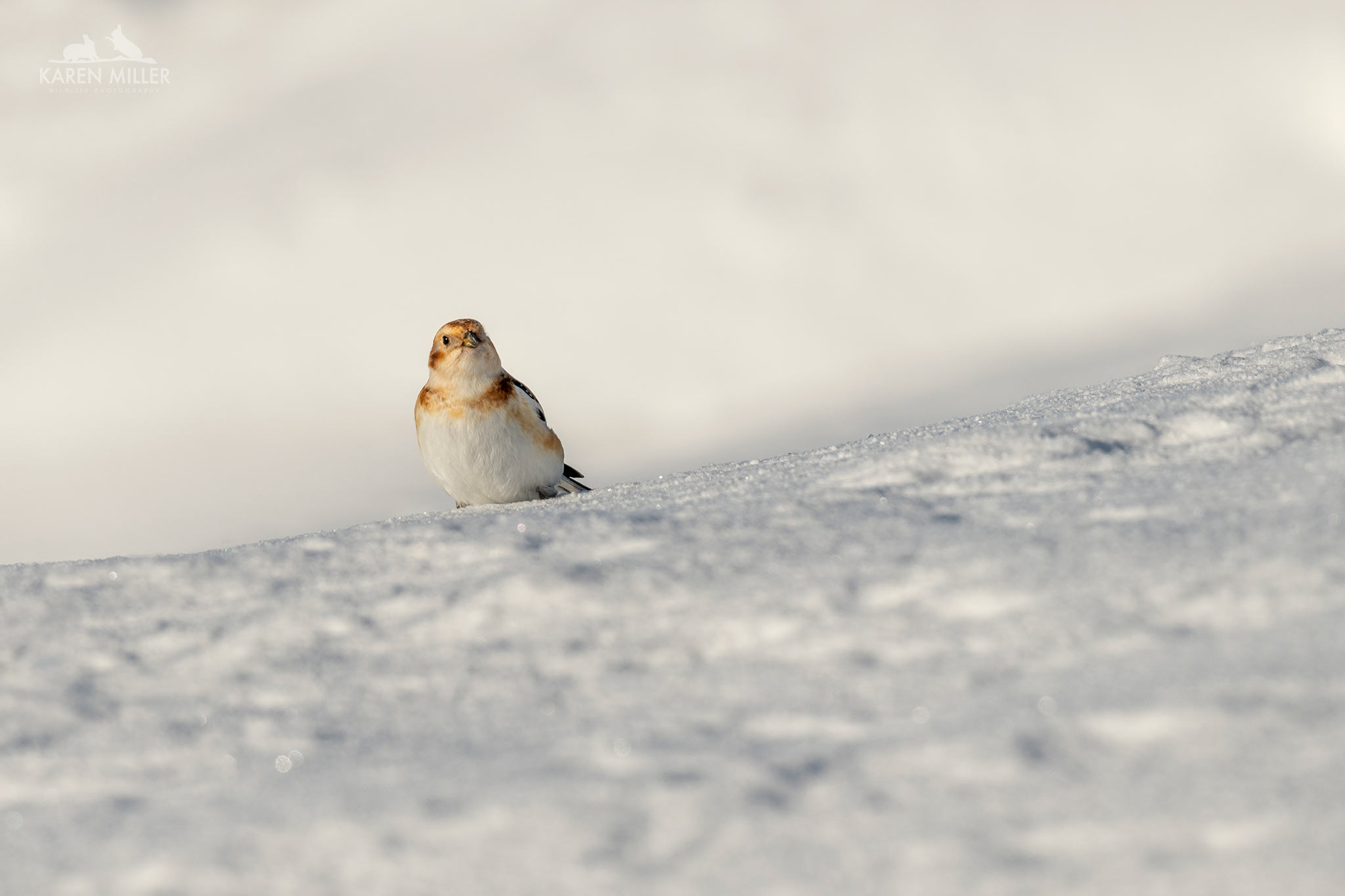
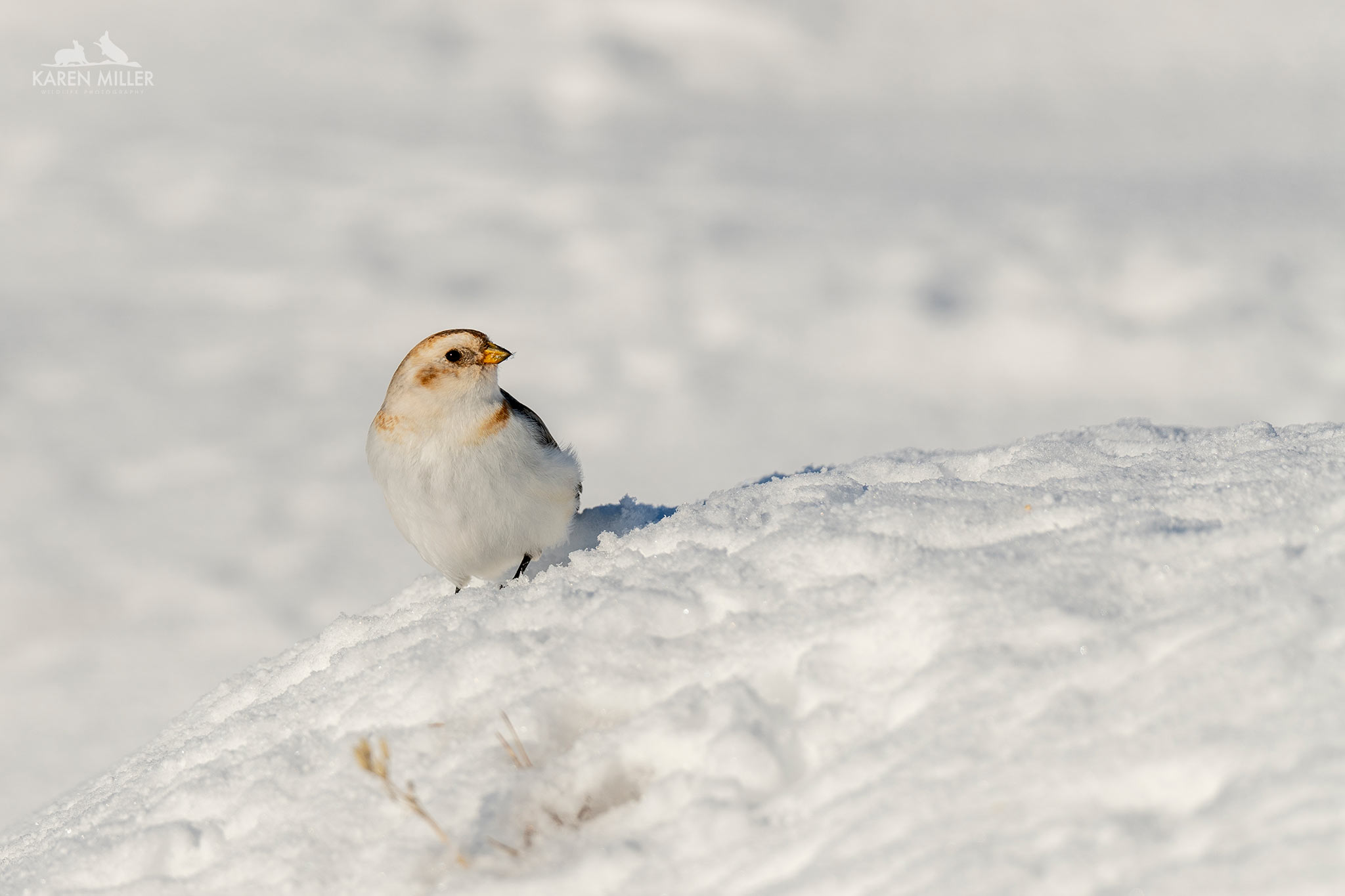


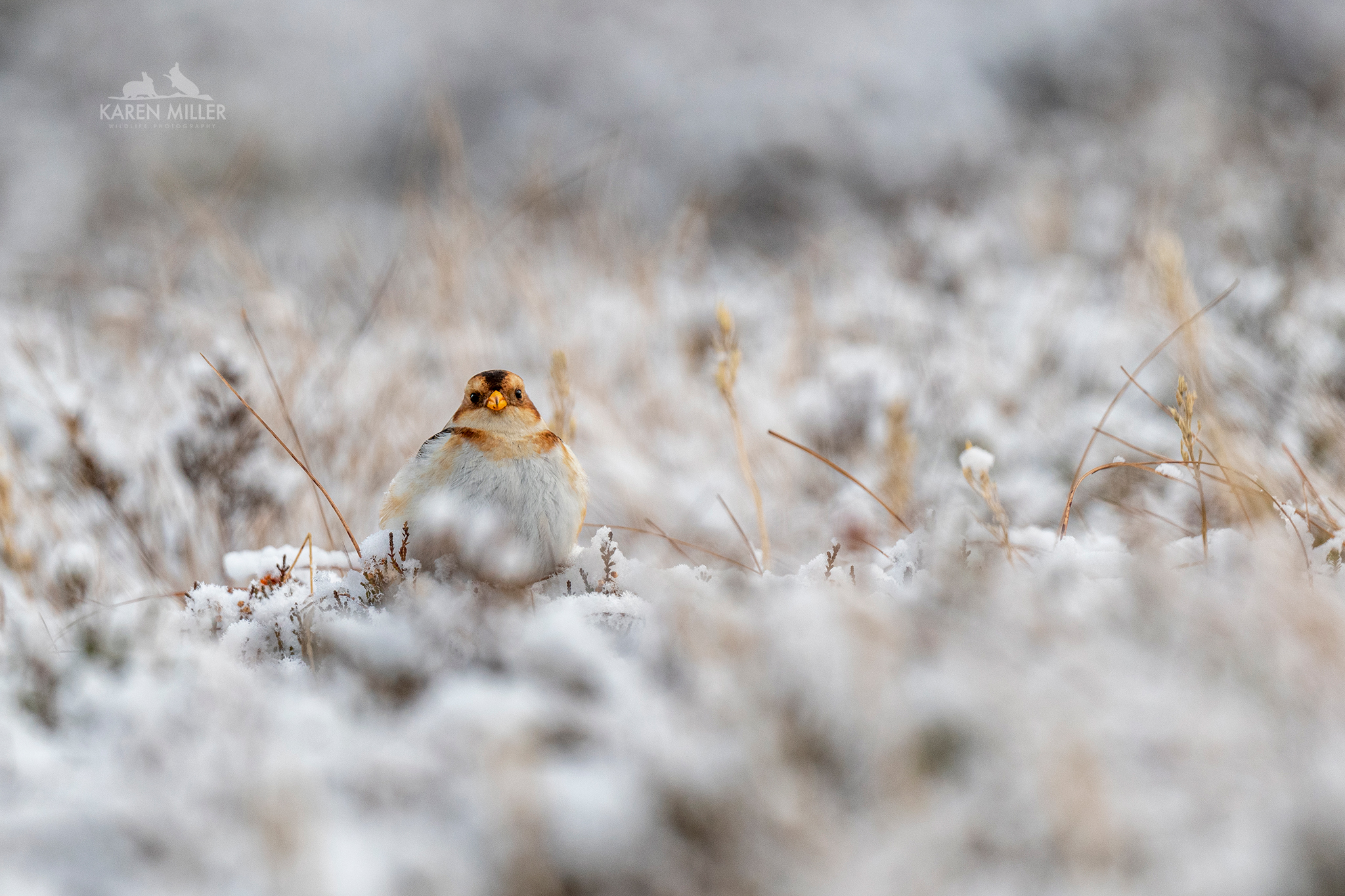
Here they are when only a dusting of snow, or none at all.

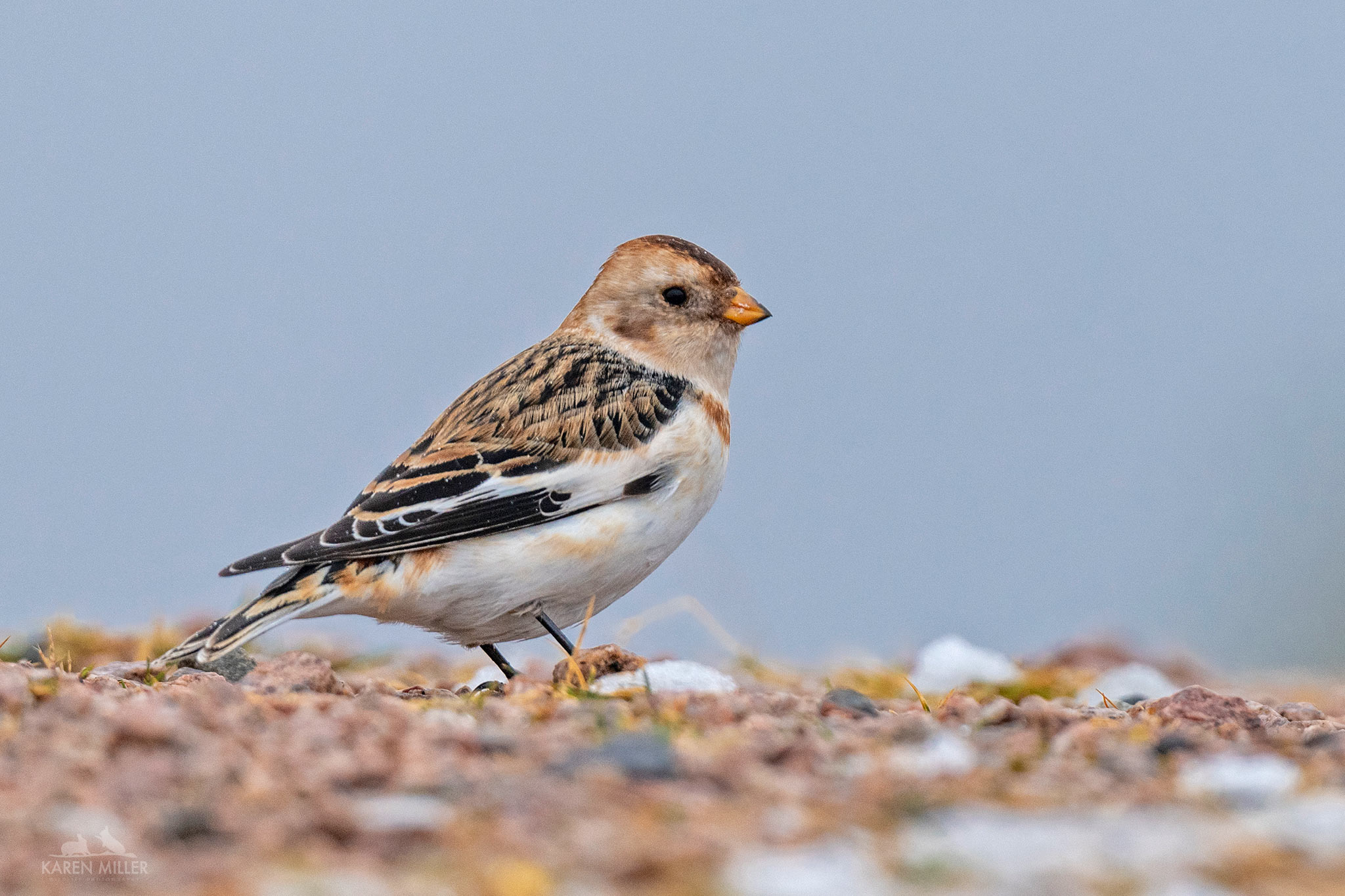

I’m looking forward to their return next winter!
Another subject I take all my winter wildlife clients, and some red squirrel therapy ones too if they wish to add it as an extra is to photograph red deer. The location I visit is quite high up, and the deer are amongst Scots pine trees which looks great. Of course it looks best if snowy. You’d think, being so high up, and in the Scottish Highlands, this would be the norm over the winter, but no! I only had proper snow there on one occasion, and one of my clients had brought the wrong camera equipment so I offered her my camera – I would have felt terrible taking photographs when she was unable to. I did take it back for a couple of minutes to rattle off some shots of the deer in the snow – expect to see one of these in my 2024 Scottish Wildlife calendar!

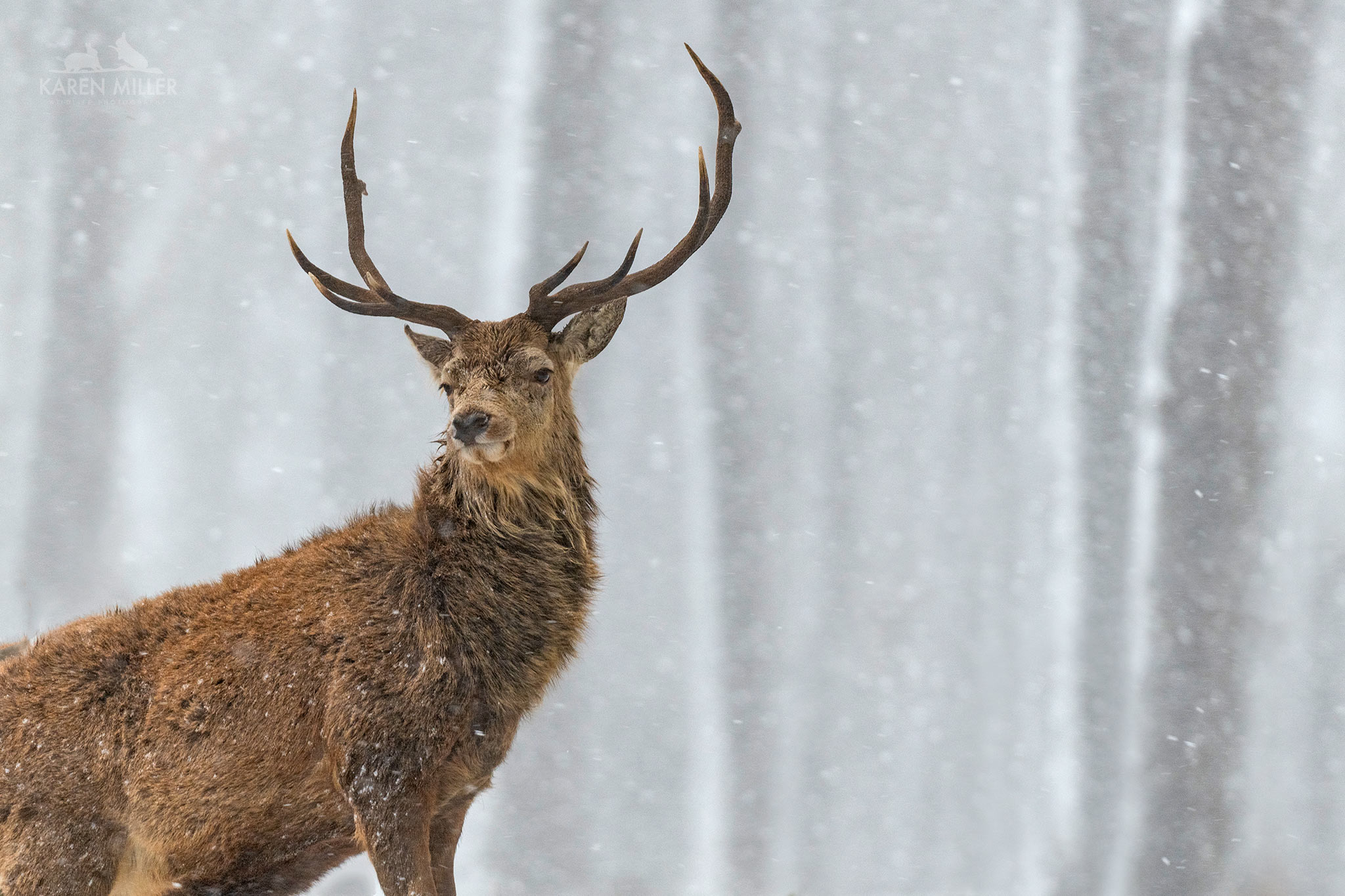

Of course, the deer look great even when it isn’t snowing and all my clients love to see them close up.

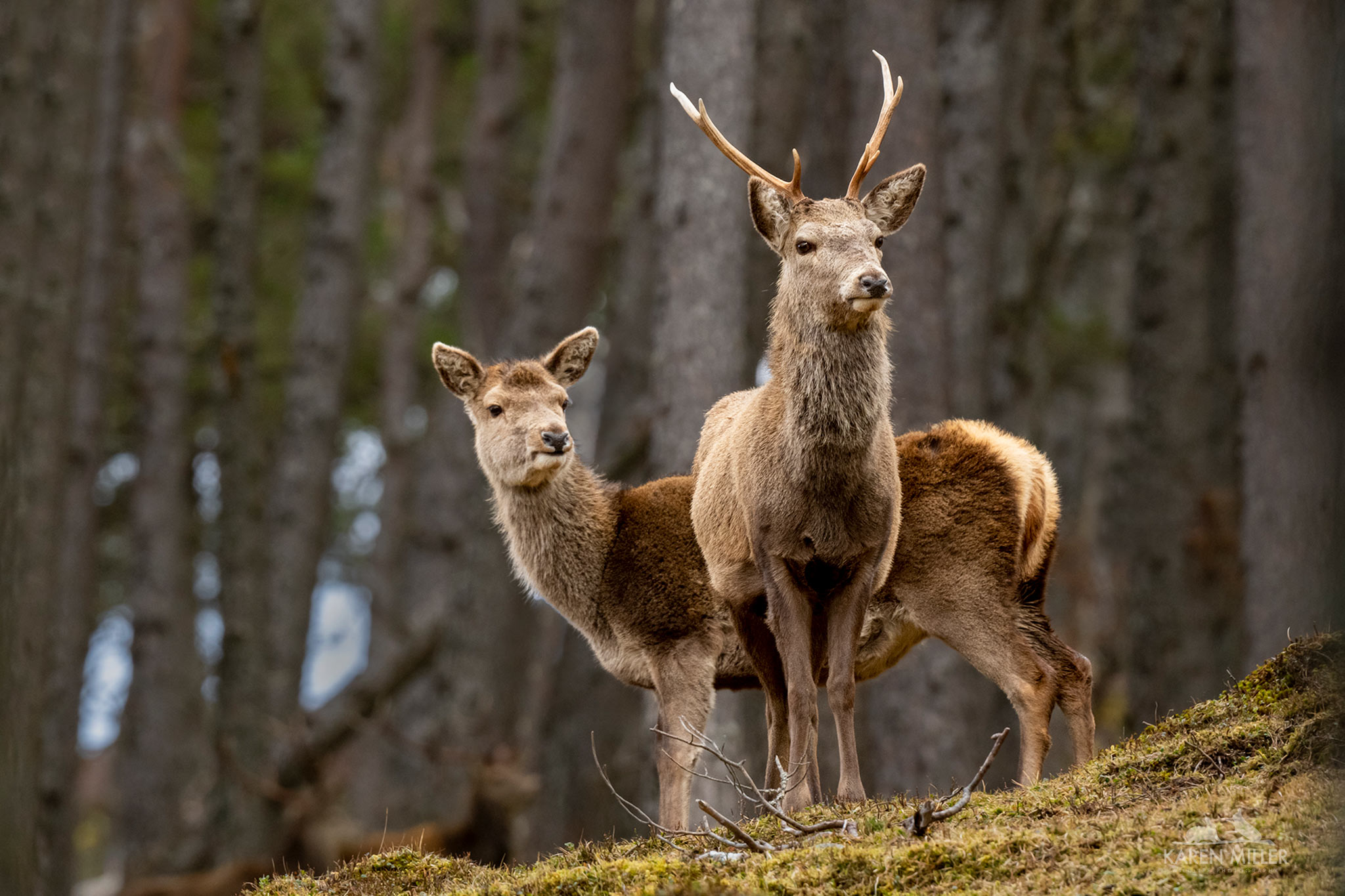




I love the hinds too, they have such beautiful, gentle faces and the most gorgeous eyes and eyelashes.
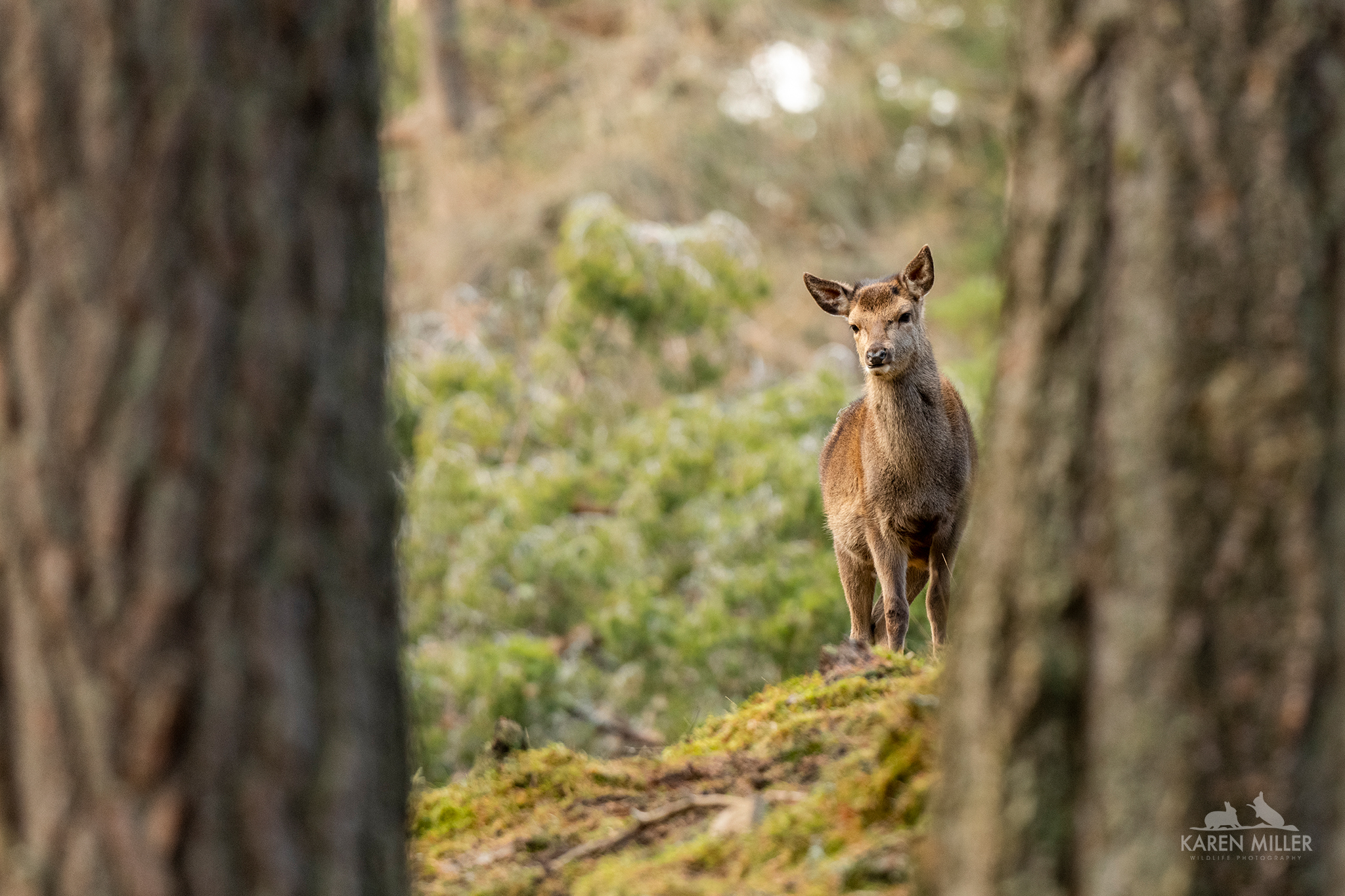


On a few occasions we were joined by a Sika deer stag. they have very grumpy looking faces!
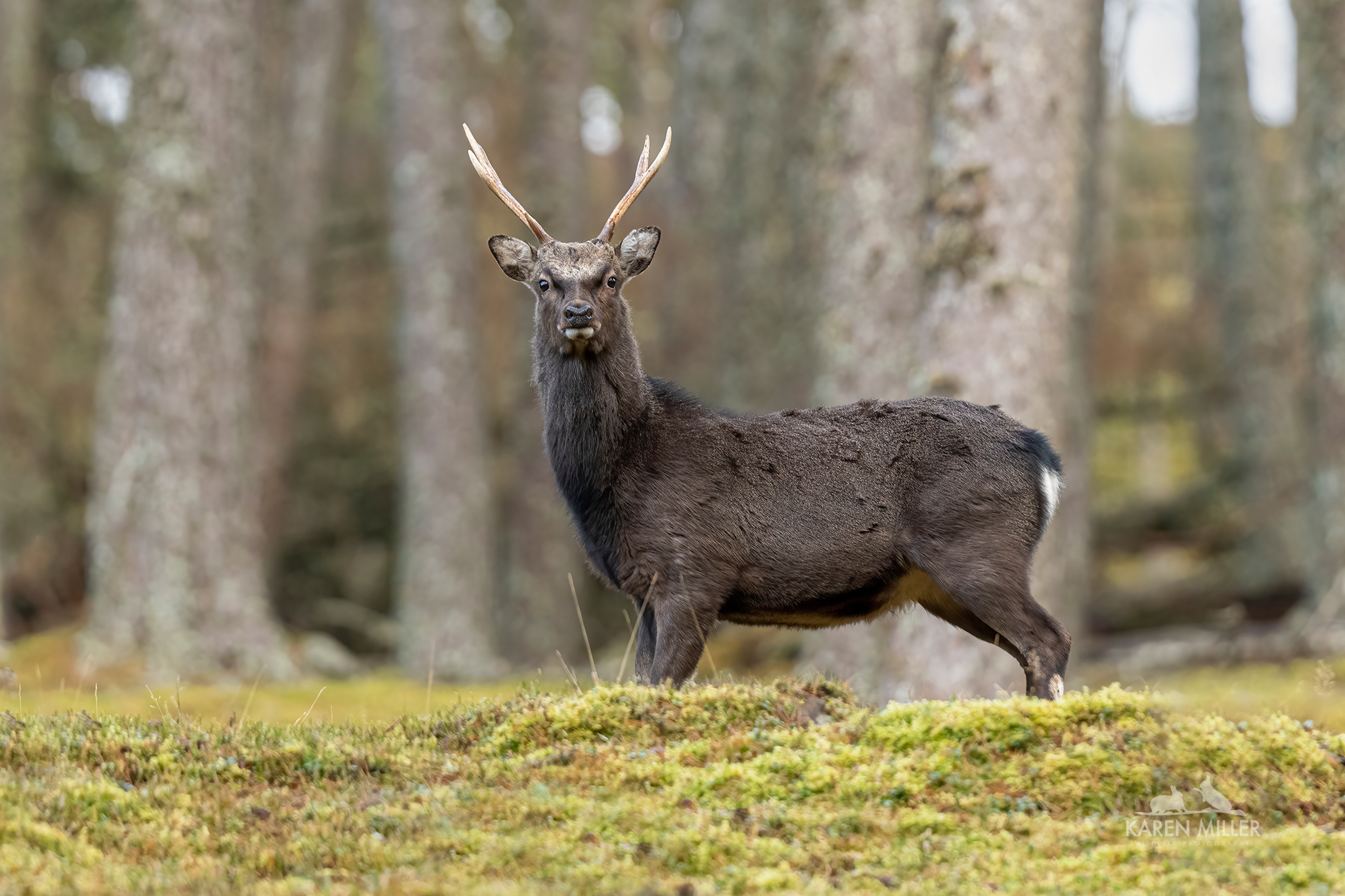
I took a couple of groups out to photograph red grouse. Numbers are relatively low right now, but we found a few.

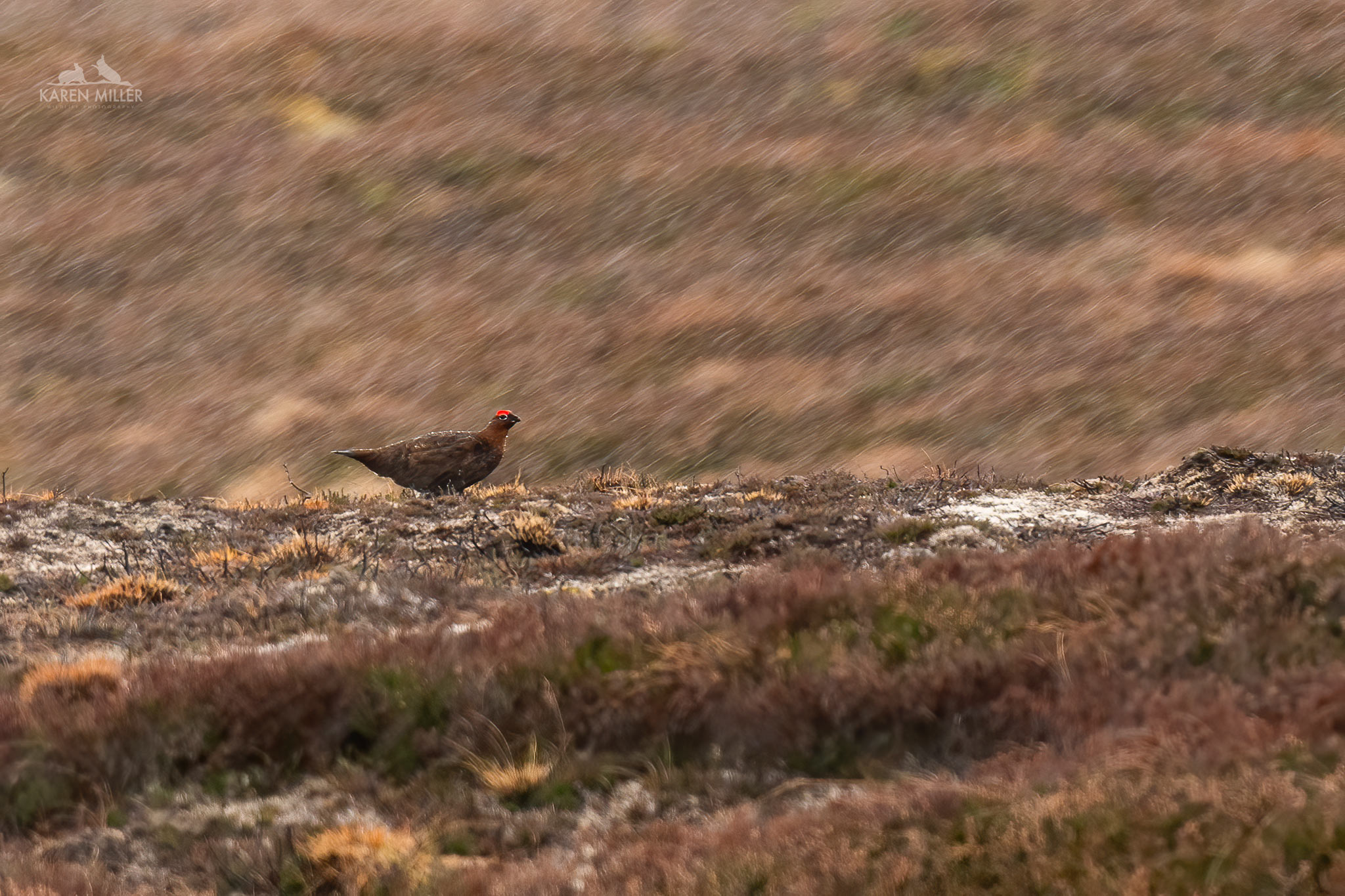
As those of you who follow my blog or social media accounts know, I love nothing better than sitting on a hillside in the company of a mountain hare. They are such very special animals. The fact that there’s no baiting, no hide and nowhere to hide, and that therefore I have to gain the confidence and trust of the animal in order to approach is what makes it so rewarding. I was worried about guiding for hares this winter as numbers are very low where I go. I did a fair bit of recceing over the early part of the winter so I knew where to take clients to have the best chance of finding one. This was especially important as if the ground is partly covered in snow they are very difficult to spot, so knowing their favourite forms can be really helpful. Here are some of my first images from the winter.


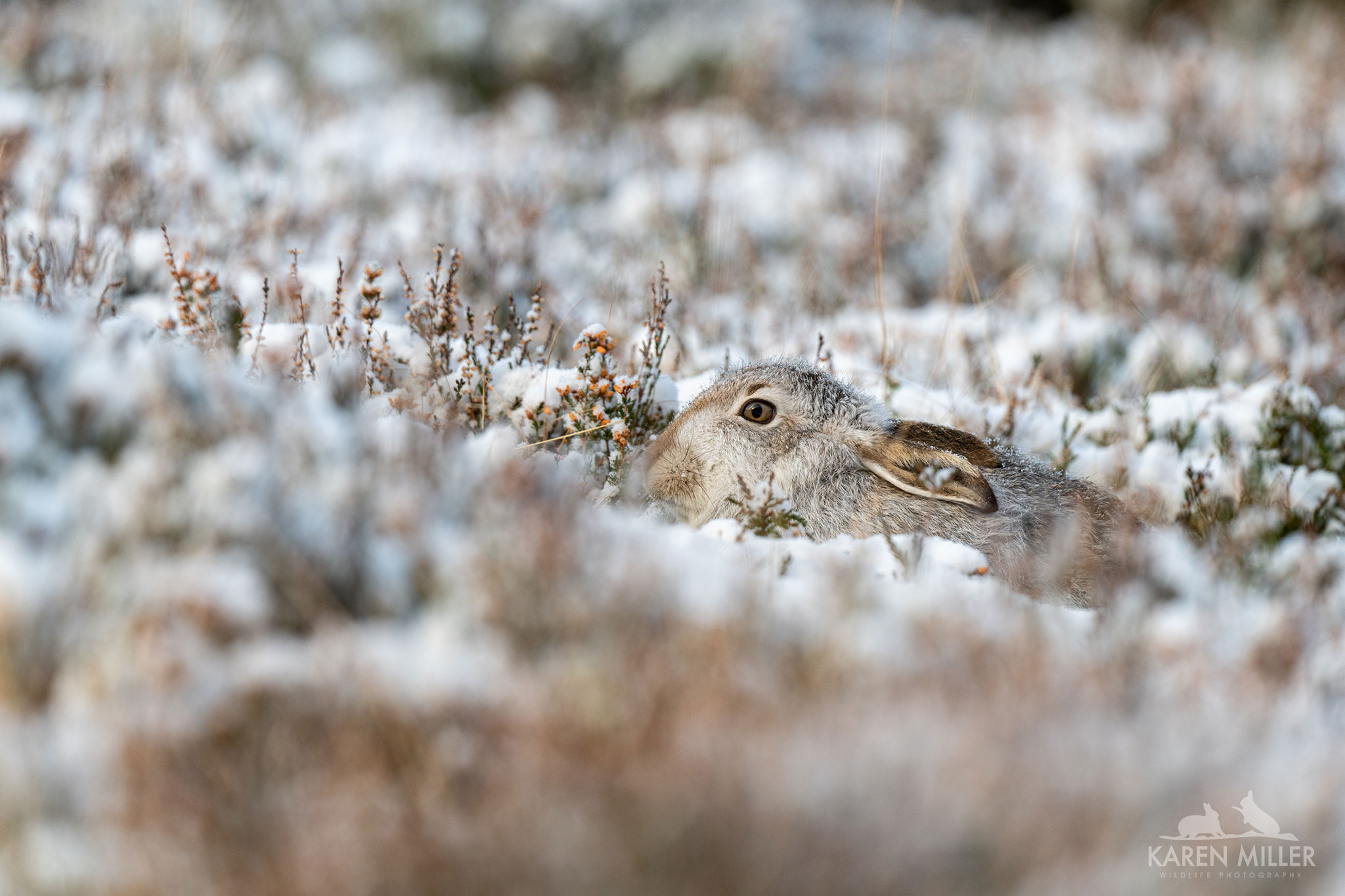
As it happens, there was so little snow at this location that the hares were very easy to spot – glowing like beacons in the darker heather. This is, of course, not great for them as there are a number of airbourne predators looking for food – golden and white-tailed eagles and peregrines plus stoats on ground level. The hares don’t seem to realise that sitting on snow would be safer, and tend to choose to sit on the heather rather than patches of snow. Probably because it’s warmer.
To be honest, when there’s little snow, the winter isn’t really the best time to photograph mountain hares (at this location at least) as they don’t actually do very much, spending their days just sitting (they are far more active overnight, and in the mornings when there is snow you see lots of prints in the snow – I always wonder where those hares disappear to during the day!). For the most part we’re sitting looking at the hare, as it looks back at us – probably wondering what on earth we’re doing! I like to think that hares are deep thinkers.



Some of my favourite images featuring inactive hares were when it was snowing. This was rare sadly.



All three of these images are of Bo. She was the hare I spent the whole of spring 2022 with. She became quite a celebrity. Initially I wasn’t 100% it was the same hare – the location was the same and she was very approachable but displaying none of the behaviours I had witnessed. I therefore called her “Maybe Bo” all winter but always had a suspicion that she was in fact Bo. Unfortunately, with no snow, she was very easy to see on the hill and there were quite a few occasions when other photographers got to her first but I still managed to introduce most clients to her. Many of the images of hares in this blog will be of her. Interestingly she never turned completely white, but always had a touch of brown on her face.
The highlight in the winter tends to be if a hare eats its own poo. (These are actually cecotropes, which is a sticky substance of partly digested food which they produce as well as pellets – all lagomorphs produce them). It’s funny watching them do this as they jerkily bend over, never taking their eyes of us until the last second, and then chew vigorously.

On the odd occasion, if we were with the “right” hare, we witnessed other behaviours. The one every client hopes to photograph is the wave – a high-four! What the hare is actually doing is washing between its toes, but it really does look like a wave. Again, most of these are of Bo. She was so relaxed she did tend to do more than many of the other hares.

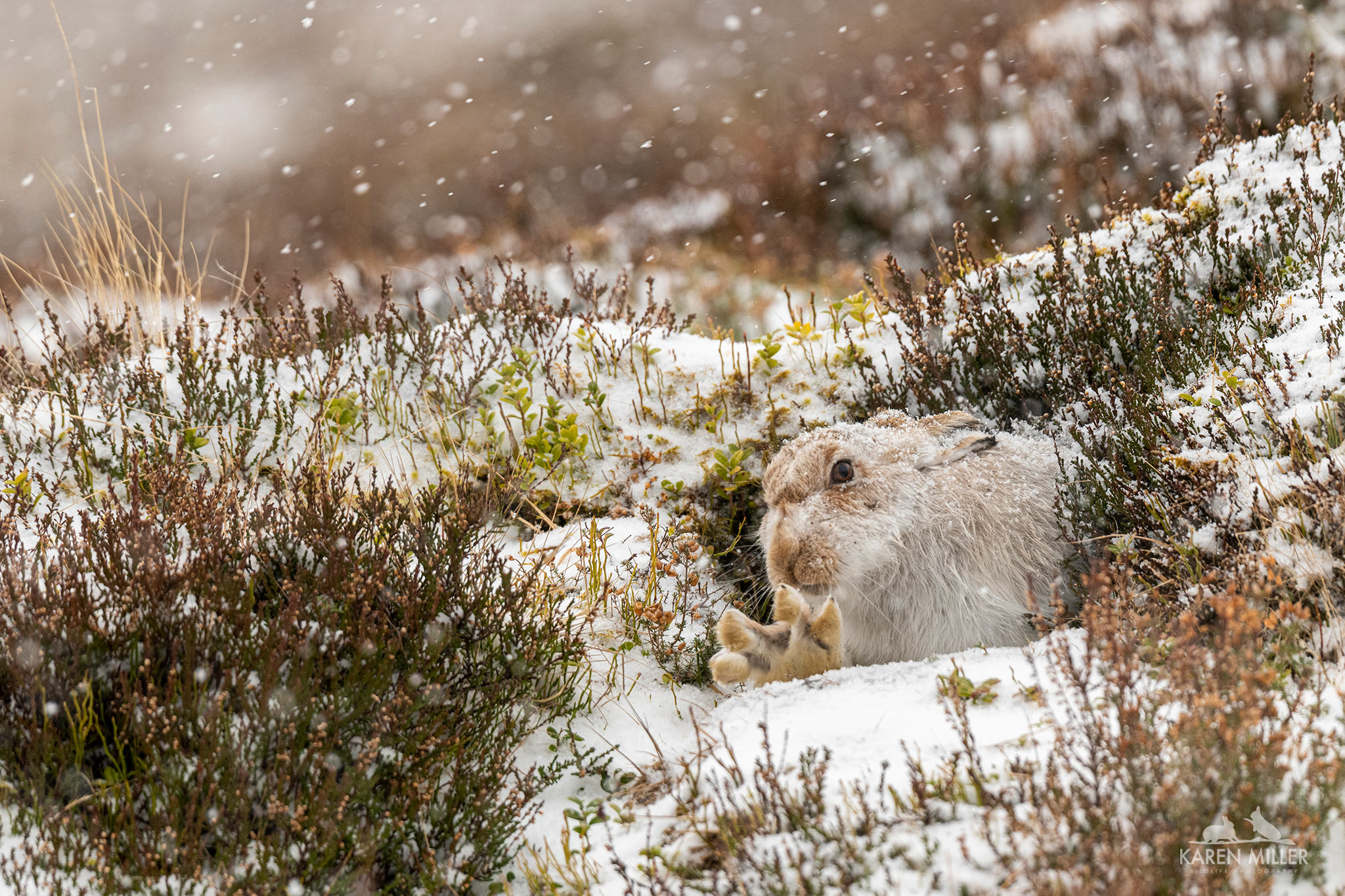


Sometimes we witnessed a shake.
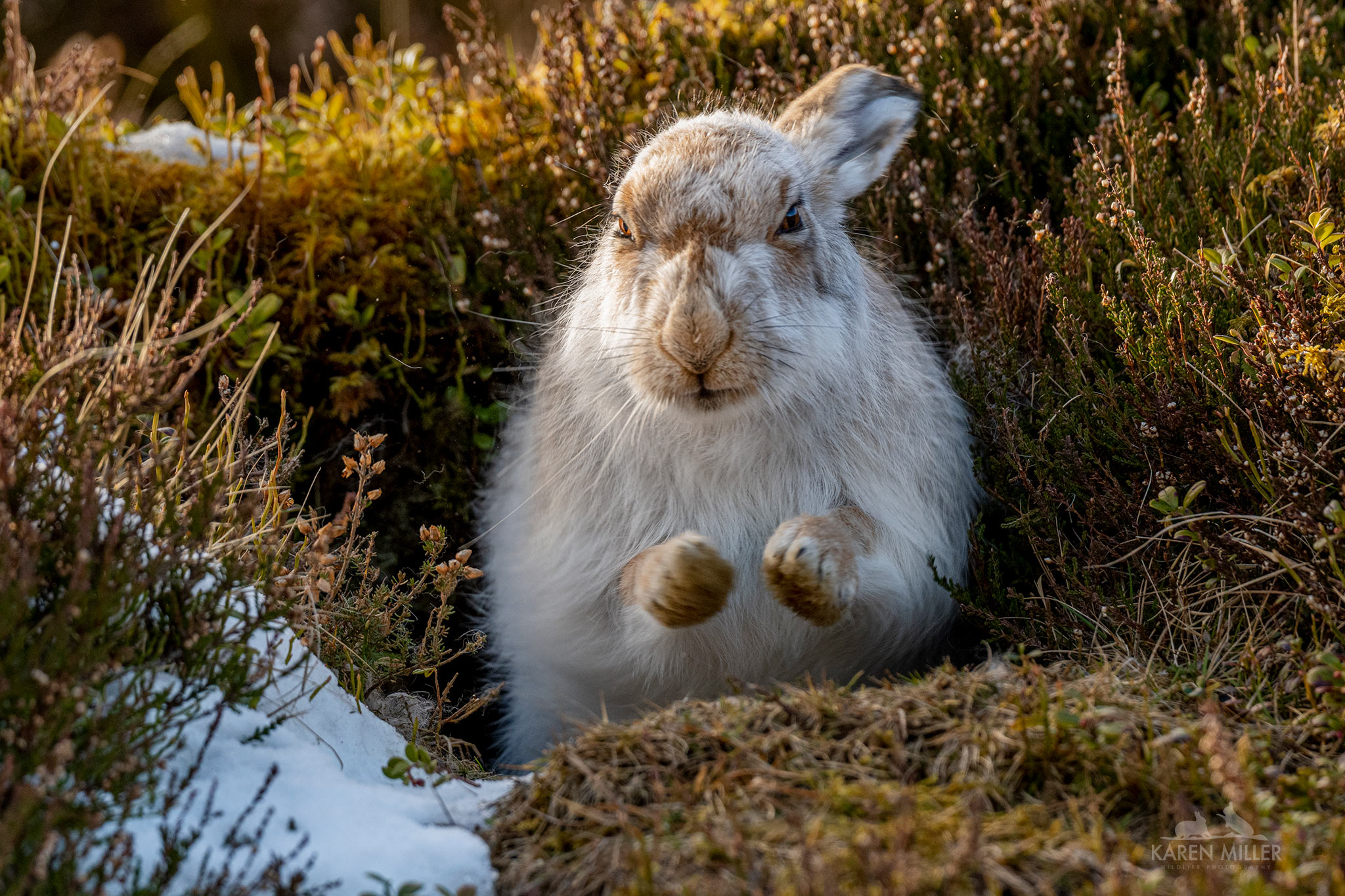

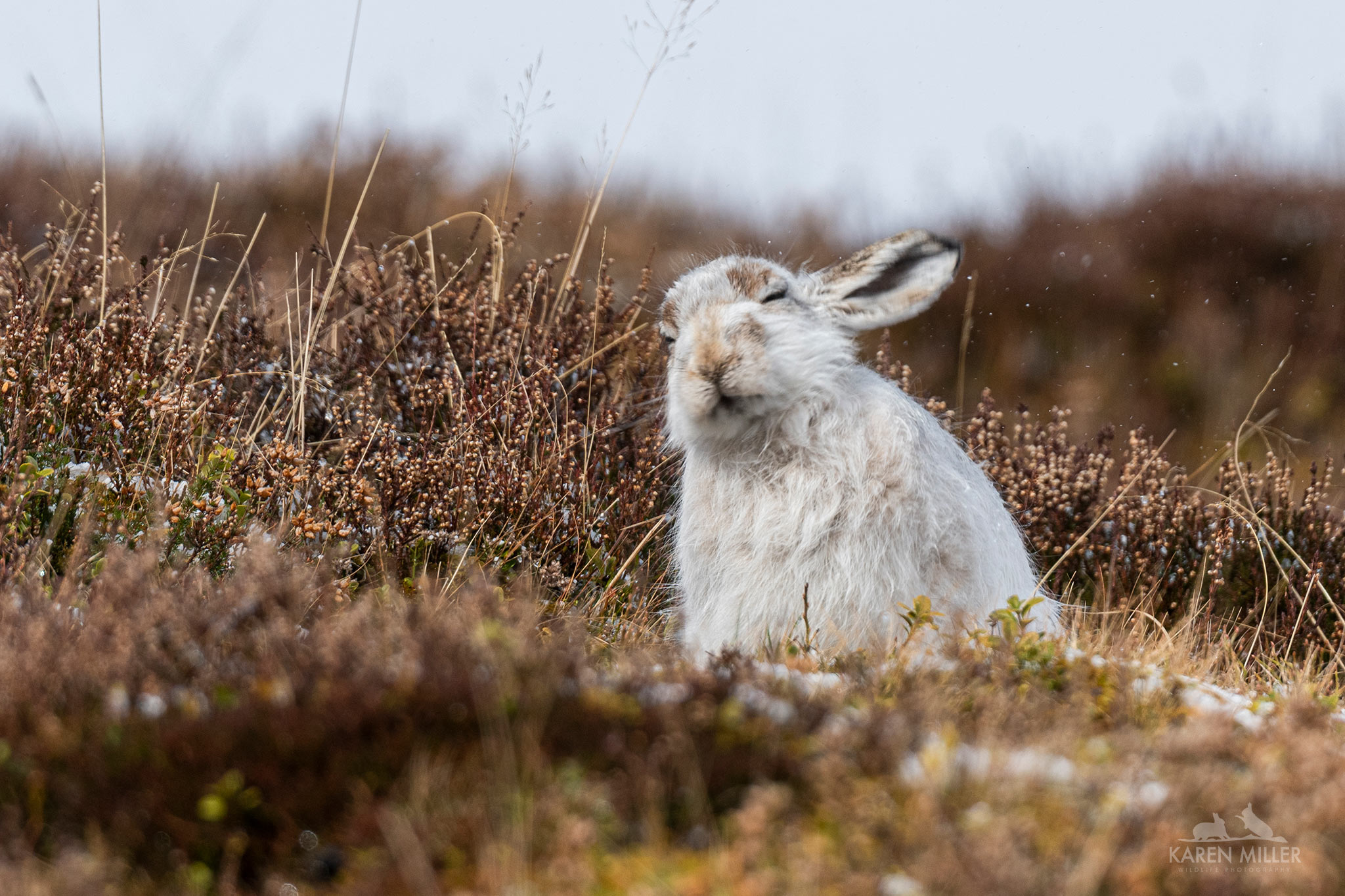
Mountain hares don’t officially use burrows, but spend their time sitting outside in a sheltered spot known as their form. However, behind most forms is a hole. They can’t be very pleasant over the winter months as they are dug into the peat, so probably very damp and cold, however, they are very useful if the hare spots a predator. I am always amazed when a hare can see and react to an eagle that is both behind it and a long way away. The ears go up and in the blink of an eye the hare has disappeared. A few minutes later it pops out again – as Bo shows here.

On one occasion my client and I witnessed something I’d never seen before. We were a fair distance away, just beginning our approach to Bo’s form when another hare bounded over, displacing her. After a minute or two she made a move, and they both disappeared down the same hole – a first for me! A minute or so later they both reappeared. Bo repossessed her form and had a groom, whilst the other hare lay down to her left for about 10 minutes before departing. (He’s demonstrating what I refer to as a “pancake hare” – lying flattened against the ground with ears back and eyes wide. This is a sign of a stressed hare, probably caused by our proximity. In normal situations, if I see a hare like this I leave it well alone even if it’s the only hare I find, but on this occasion, we were in place before it did this, so we sat patiently hoping it would move on, which it did).

I only managed a hare in proper snow once all winter, and that was at a different location. This one had such a beautiful face!
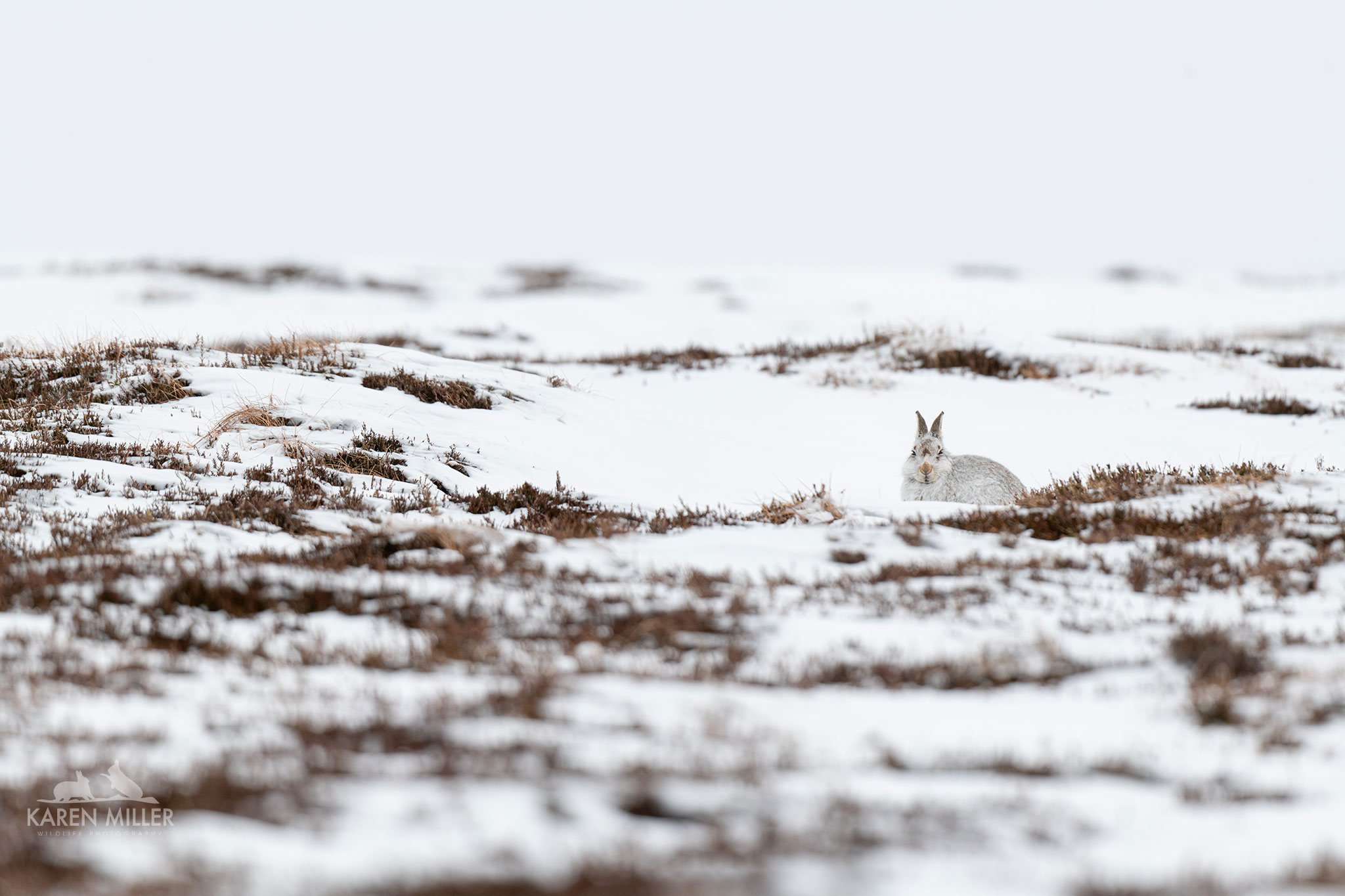
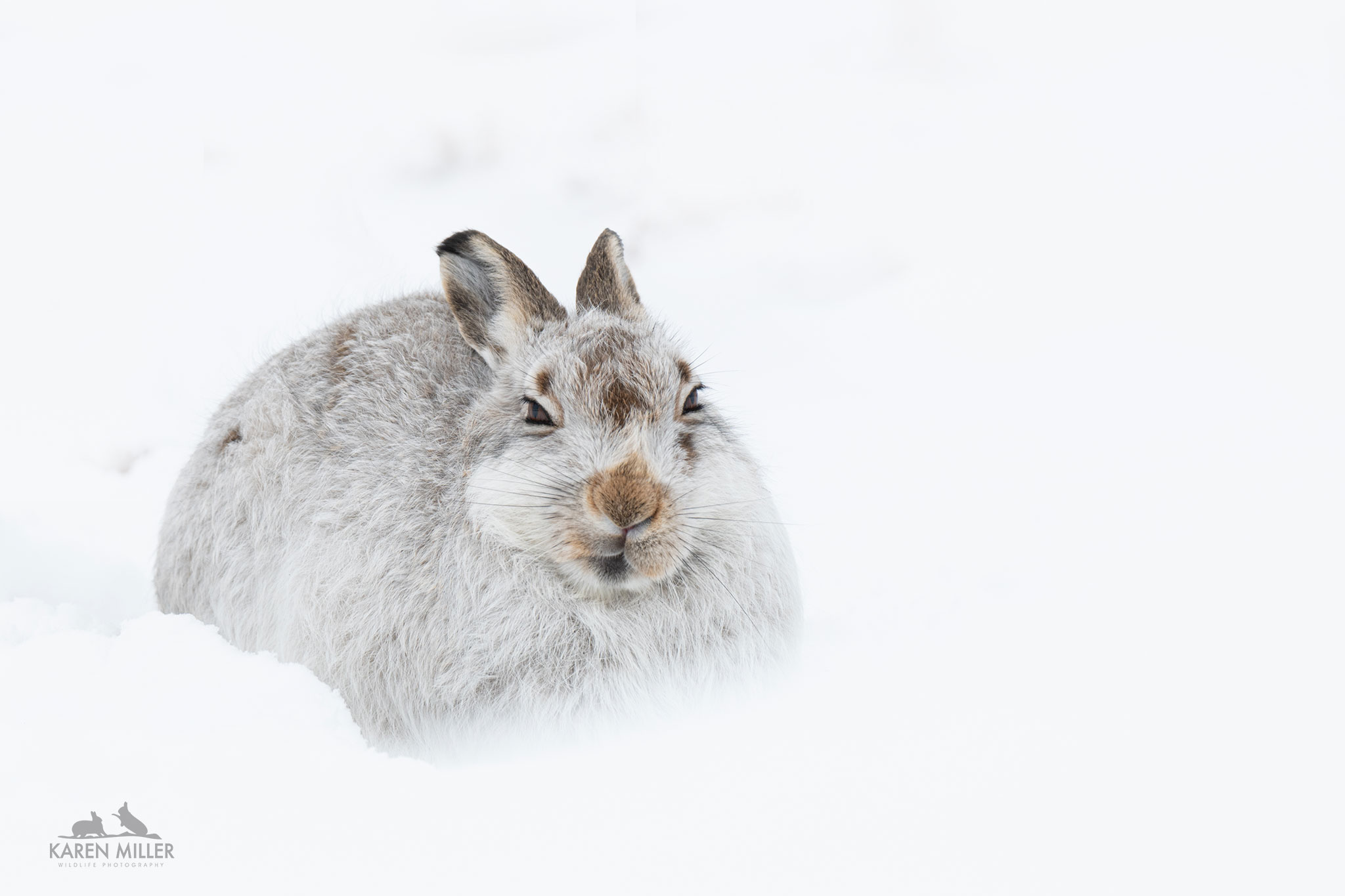

I’m going to write a blog all about Bo, showing her transition from white to brown. She was brilliant in the early spring, so active. Such a wonderful hare and certainly the best one I’ve ever had the privilege of spending time with.
So… that was my winter, wrapped up tidily in 3 blogs. It was a tough one weather-wise. Very little traditionally winter weather – mostly rain, wind and fairly mild conditions. Sadly this is becoming the norm. The days where you could expect snow are gone and when it did come the ground was warm and it disappeared very quickly. It’s such a shame for clients who come hopeful of snowy weather but hopefully the wildlife didn’t disappoint, and I know everyone departed happy which is the important thing.
I’m now taking bookings for winter 2023/24. I have a 3 day/4 night package which includes accommodation at my rental cabin. This is suitable for one or two people who know each other and are happy to share an open plan space. If you’d like to do the workshop without the accommodation that’s possible too. I also offer guiding days which are available all year round, but don’t do mountain hare specific guiding in February (it is included in the 3 day package) or over the summer/autumn as it’s now too difficult to locate hares. For more information on all my workshops please visit my website or send me a message.
If you’re interested in greeting cards, prints, calendars (coming soon) or accommodation then please visit my website https://www.karenmillerphotography.co.uk.


Lovely blogs, as usual. I am unlikely to visit Scotland again (health issues), but I love seeing the wildlife & scenery. Thanks for the interesting narrative, too.
LikeLike